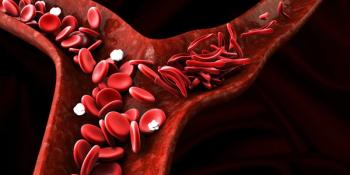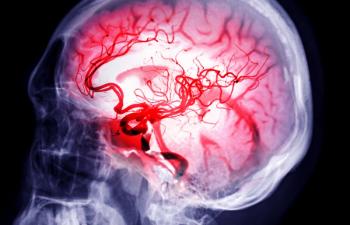
New Treatment Approach Could Lead to a Functional HIV Cure
A derivative of a natural compound could stop HIV replication and prevent a viral rebound.
Findings from a new study in Cell Reports suggest that a novel strategy may lead to an effective
For the first time, researchers have discovered a compound that can suppress HIV production in chronically infected cells. The drug also prevents viral rebound and is effective even when the cells are stimulated, according to the study.
“No other antiretroviral used in the clinic today is able to completely suppress viral production in infected cells in vivo,” said researcher Susana Valente, PhD. “When combining this drug with the standard cocktail of antiretrovirals used to suppress infection in humanized mouse models of HIV-1 infection, our study found a drastic reduction in virus RNA present—it is really the proof-of-concept for a ‘functional cure.’”
The new approach inhibits reactivation of the virus in cells and forces HIV into latency, according to the study. The results of the drug were observed to persist during treatment gaps, suggesting it might be an effective long-term therapy, the authors noted.
In the study, the investigators used a derivative of the didehydro-Cortistatin A (dCA). This natural compound inhibits HIV replication in infected cells by blocking the viral transcriptional activator (Tat). This stops viral production reactivation and the replenishment of the latent viral reservoir, according to the authors.
“Combining dCA with antiretroviral therapy accelerates HIV-1 suppression and prevents viral rebound after treatment interruption, even during strong cellular activation,” Dr Valente said. “It’s important to note that our study uses the maximum tolerable dose of the drug—with virtually no side effects.”
The authors evaluated dCA and antiretroviral therapy (ART) in mouse models of latent and active HIV. They discovered that when the approach was stopped, the viral rebound did not occur for 19 days compared with 7 days for mice treated with ART monotherapy, according to the study.
“This demonstrates the potential of ‘block-and-lock’ strategies,” said co-author Cari F. Kessing, PhD. “This study shows that a ‘functional cure’ approach can succeed in reducing residual virus in the blood during anti-retroviral treatment and limiting viral rebound during treatment interruption.”
The authors also found that HIV was undetectable in half of mice treated with dCA after 16 days of treatment cessation, according to the study.
“We blocked Tat, and the cell’s machinery did the rest,” said co-author Chuan Li, PhD. “The result was that the HIV promoter becomes repressed.”
Since the animals were only exposed to 1 month of treatment, the long-term effects could lead to increased delays in viral rebound, according to the study.
“That’s a relatively short period of time,” Dr Valente said. “We think longer treatments will result in longer, or even permanent, rebound delays. The question is how long? We’re studying that now.”
Additionally, blocking HIV viral rebound may reduce the risk of adverse effects and may improve patient outcomes, the authors added.
“This is the only class of drugs that stops infected cells from making viruses outright,” Dr Valente said. “All current antivirals work later in the viral lifecycle, so only a HIV transcriptional inhibitor like dCA can stop the side effects of low-level virus production.”
Newsletter
Stay informed on drug updates, treatment guidelines, and pharmacy practice trends—subscribe to Pharmacy Times for weekly clinical insights.





















































































































































































































